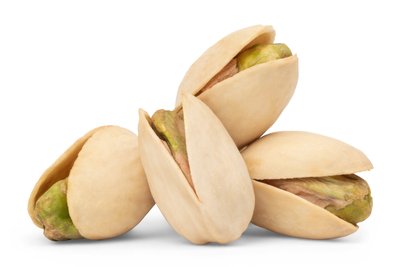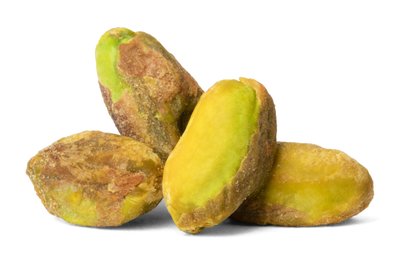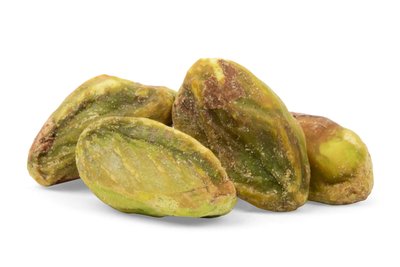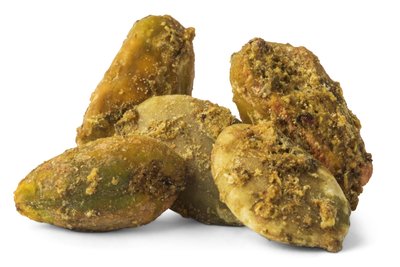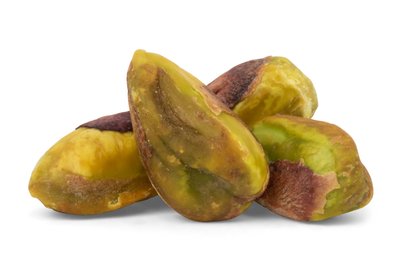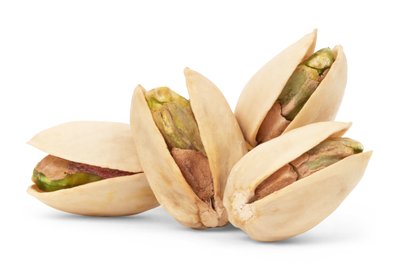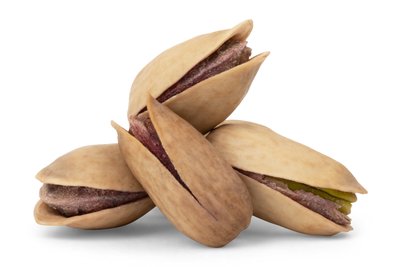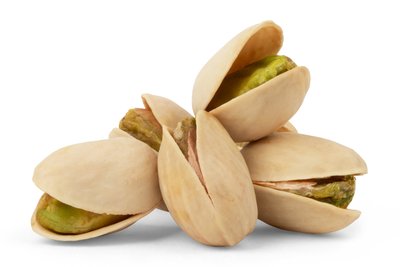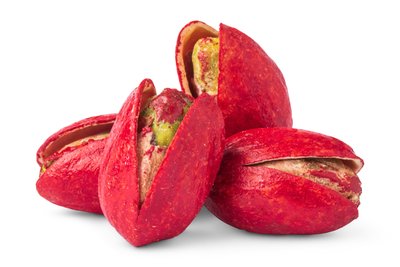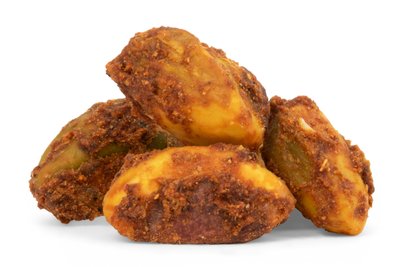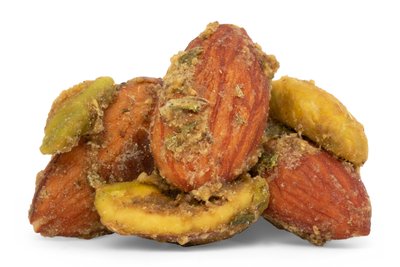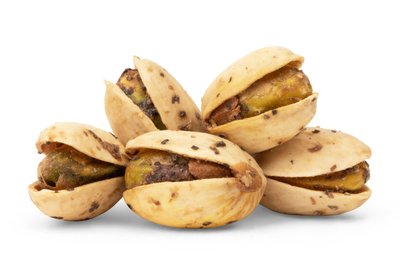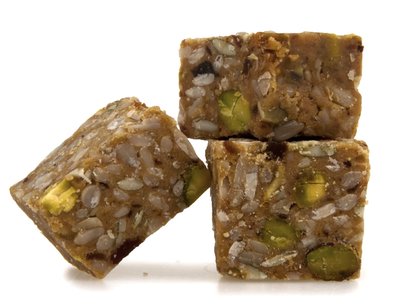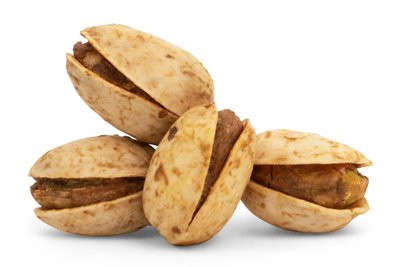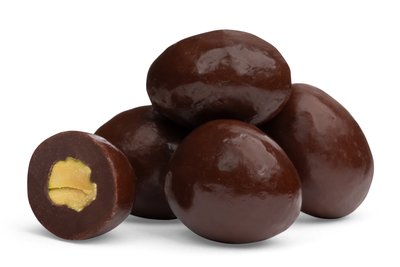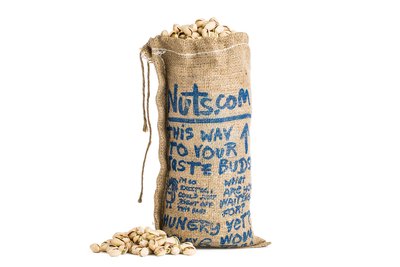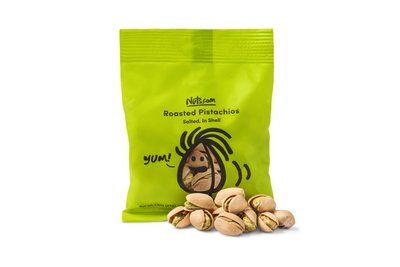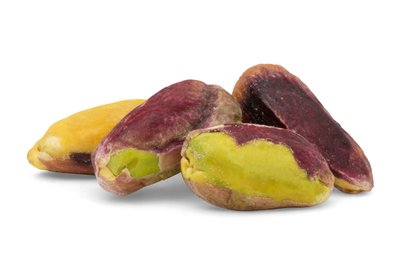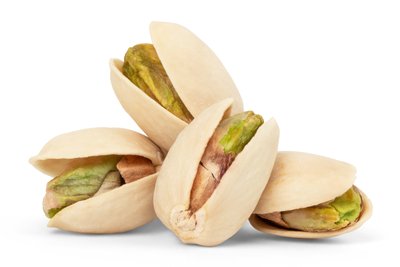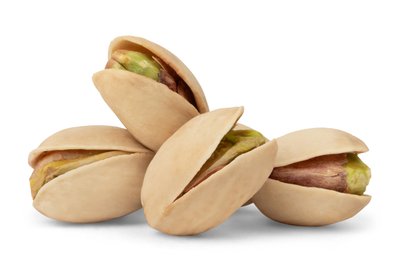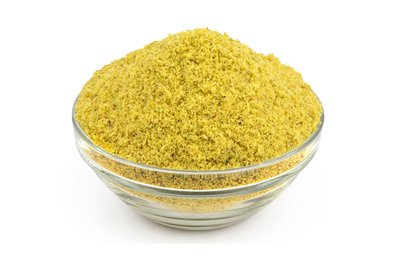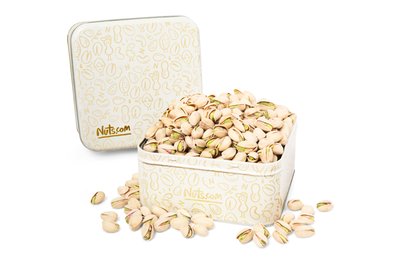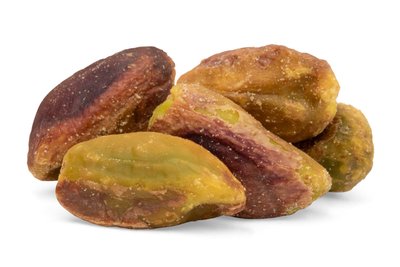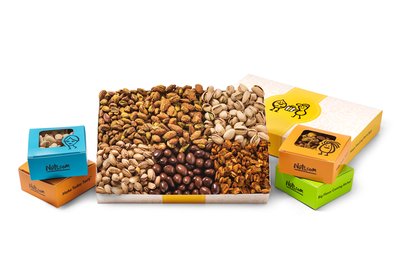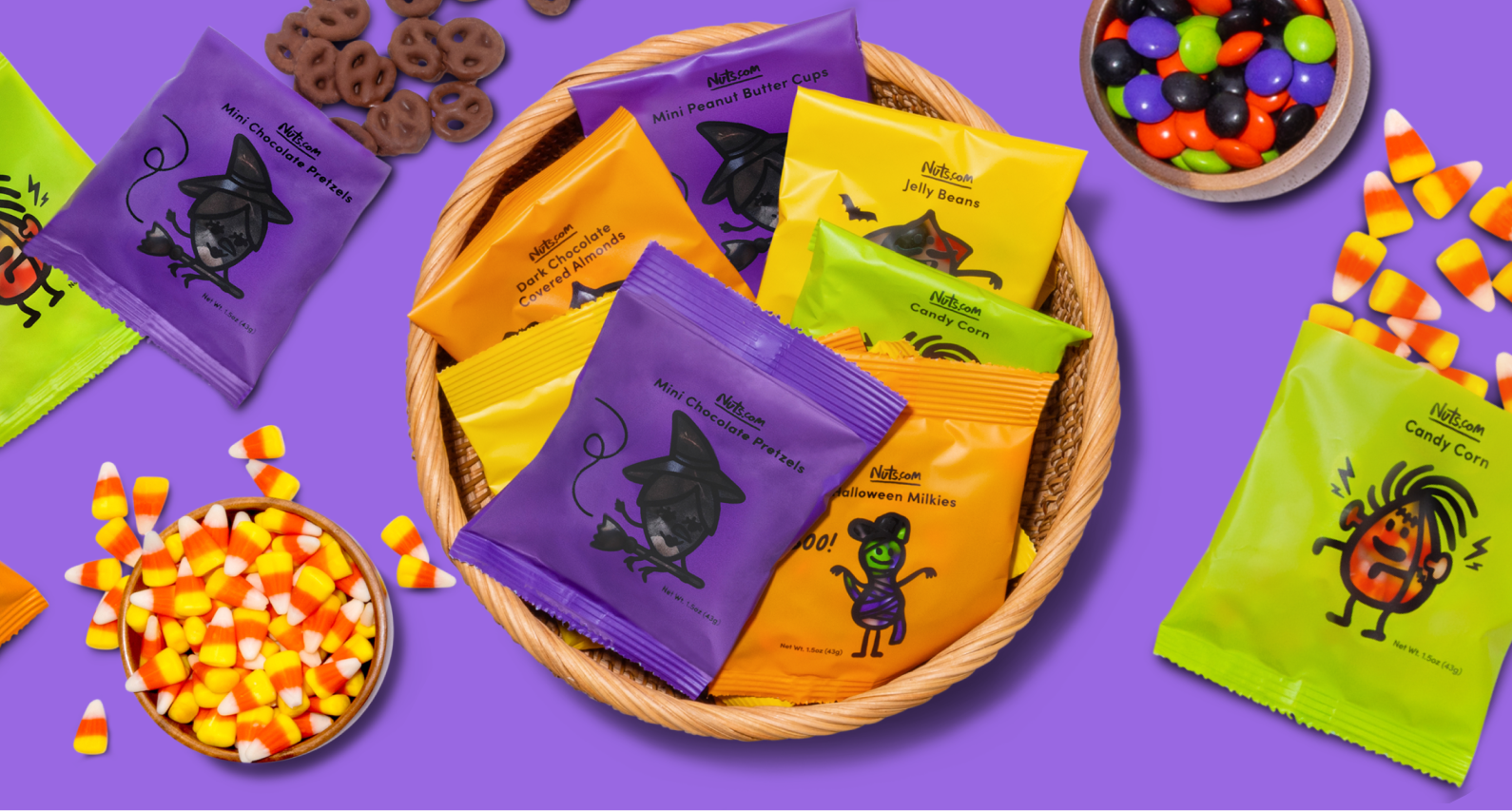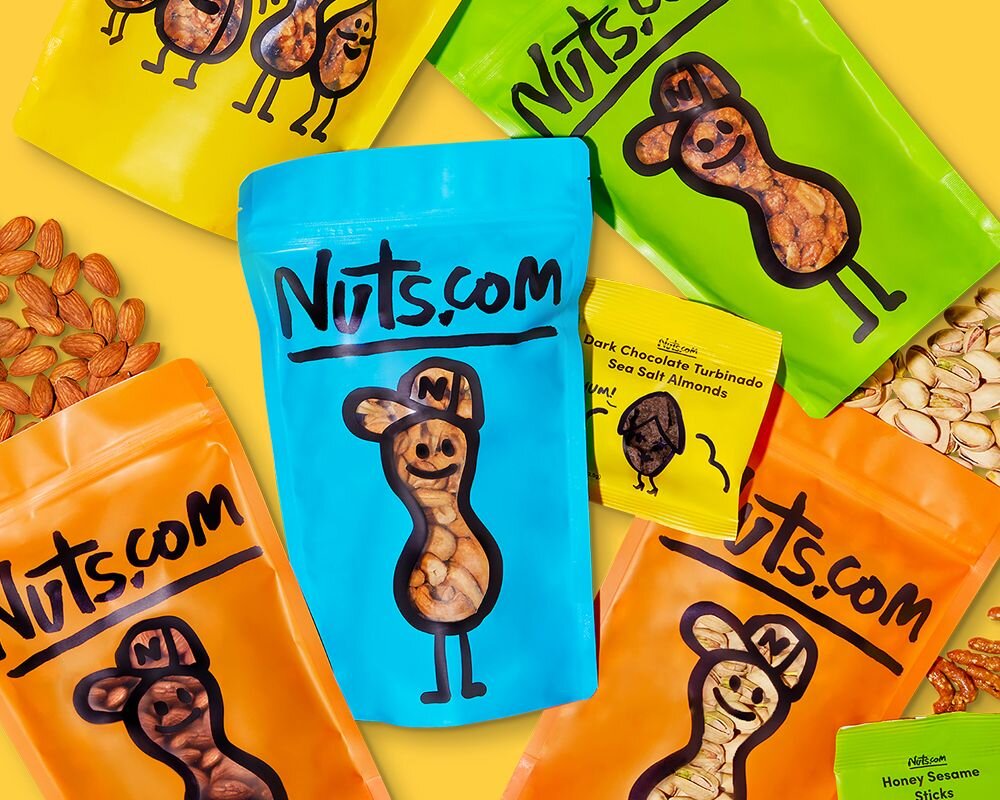Pistachios
Sort by:
Pistachios
Although commonly thought of as nuts, pistachios are actually the seeds of a plant belonging to the cashew family. It is believed that pistachios were first consumed in the Middle East as far back as 6750 BC. Today, Iran, the United States, and Turkey are the world’s leading producers of pistachios. They are enjoyed for their unique nutty taste, their excellent nutritive value, and their impressive versatility, with a wide range of culinary applications for the pistachio all over the world. From snacks and salad toppings to ice creams and other sweet treats like baklava, Turkish delight, and nougat- the nut offers a compelling ingredient for countless dishes thanks to its rich, distinctive palate.
Pistachios feature a creamy texture and a naturally sweet, yet earthy, flavor. As such, they are ideal for any number of confections and make for a popular flavor of ice cream, gelato, macarons and more. The creamy texture of the nut and its earthy tones also make it an ideal nut for pairing with both spicy and sour savors; it is often enjoyed with seasonings that add piquancy to its particular palate. In spite of its distinctive qualities, there are further nuances that define individual varieties of the nut.
Turkish Pistachios vs. California Pistachios
Turkish pistachios: Turkey is the largest exporter of pistachios into the United States and ranks third in overall production behind the U.S. and Iran. Turkish Antep pistachios are named after the city in Turkey where they’re produced. Antep pistachios are the most popular variety of Turkish pistachios, and are prized for their delicious savory flavor and delicate hint of sweetness. They are often used for snacking and for making baklava and Turkish delight. Siirt pistachios are grown in the Siirt province of Turkey, and are more rare than Anteps. They have a very distinct pistachio flavor and are larger than Antep pistachios, but smaller than the California variety.
California pistachios: California’s warm, dry climate provides ideal growing conditions for pistachios. California pistachios are typically larger with the kernel more exposed, making them easier to open than Turkish varieties; additionally, their flavor tends to be milder, lending to a wider variety of uses. In-shell California pistachios are enjoyed for snacking while out-of-shell varieties make a wonderful addition to salads and dishes or a delectable sweet when coated with chocolate. In the 1930’s, California pistachios were dyed red to hide stains from harvesting and attract more attention to the bins of pistachios sold in stores.
Nutrition & Health Benefits
Pistachios are lauded for their unique savor, but the nuts should also be celebrated for their various health benefits. Learn some of our favorite features of these nuts with the list below.
Low-Calorie Snack
A one-ounce serving of pistachios contains 49 nuts and about 160 calories. That’s more nuts and fewer calories per serving than any other nut. A serving of pistachios contains more than 10% of the Daily Value (DV) for dietary fiber, 20% of the DV for vitamin B6, and 15% of the DV for thiamine. Fiber plays an important role in controlling blood cholesterol and glucose levels, while vitamin B6 and thiamine support the nervous system, brain function, and eye health. Pistachios are also a good source of protein, potassium, copper, and phosphorus.
Lower Cholesterol, BMI, and Triglyceride Levels
A 2008 study published in the American Journal of Clinical Nutrition found that participants who replaced either 10 or 20 percent of their daily caloric intake with pistachios reduced their total cholesterol and LDL “bad” cholesterol more than those participants on a reduced fat diet without pistachios. Further, a 2010 study published in the Journal of the American College of Nutrition demonstrated that consuming 240 calories worth of pistachios for 3 months reduced body mass indexes (BMI) and triglyceride levels more than participants who consumed 220 calories in pretzels for that time period.
High Levels of Phytosterols
Pistachios are a rich source of phytosterols, plant-based compounds that have been proven effective at lowering blood cholesterol levels. A 2005 study in the Journal of Agricultural and Food Chemistry examined the phytosterol content among commonly eaten foods and found that pistachios and sunflower seeds had the highest phytosterol levels among popular nuts and seeds.
Amino Acids
Pistachios are a good source of amino acids, the building blocks of protein. In particular, pistachios are rich in L-arginine, which is capable of improving blood flow in clogged arteries and is essential for supporting the body’s metabolic processes. Pistachios also contain the amino acids lutein and zeaxanthin, which play an important role in eye health and may slow the progression of age-related macular degeneration.
Turkish Pistachios vs. California Pistachios
The origins of your nut may make a significant difference in their taste and texture, which is why knowing more about them is essential when selecting the right pistachio for your palate. Learn more about the two most popular climates for cultivating pistachios and the effects they have on the nuts below.
Turkish Pistachios
Turkey is the largest exporter of pistachios into the United States and ranks third in overall production behind the U.S. and Iran. The two most popular types of pistachios exported from Turkey are known as Antep and Siirt pistachios.
Antep Pistachios
Turkish Antep pistachios are named after the city in Turkey where they’re produced. Antep pistachios are the most popular variety of Turkish pistachios, and are prized for their delicious savory flavor and delicate hint of sweetness. They are often used for snacking and for making baklava and Turkish delight.
Siirt Pistachios
Siirt pistachios are grown in the Siirt province of Turkey, and are more rare than Anteps. They have a very distinct pistachio flavor and are larger than Antep pistachios, but smaller than the California variety.
California Pistachios
California’s warm, dry climate provides ideal growing conditions for pistachios. California pistachios are typically larger with the kernel more exposed, making them easier to open than Turkish varieties; additionally, their flavor tends to be milder, lending to a wider variety of uses. In-shell California pistachios are enjoyed for snacking while out-of-shell varieties make a wonderful addition to salads and dishes or a delectable sweet when coated with chocolate. In the 1930’s, California pistachios were dyed red to hide stains from harvesting and attract more attention to the bins of pistachios sold in stores.
Safe Pistachio Storage
Pistachios should be stored in an airtight container in a cool, dry place. When stored at room temperature, the nuts will last a few weeks. When stored in the refrigerator, they can last for months and may even keep for a full year if stored in the freezer.
How are Pistachios Harvested?
A nutritious nut with an irresistible taste, the beloved pistachio is actually a seed kernel grown principally from the Pistacia vera tree. This tree has several cultivars; but, the most common is the kerman, from which the nuts are typically harvested. A member of the cashew family, Anacardiaceae, the pistachio tree is native to Central Asia and the Middle East and grows in the arid, saline soil of the desert. As a desert plant, pistachio trees grow best in hot, dry climates and are harvested between late August and early October.
Growing your own pistachios sounds like a dream come true; unfortunately, even in the right conditions, it can take eight to ten years for the modern Pistacia vera to develop to a point of bearing its first harvest of edible nuts and fifteen to twenty years until it offers a full bearing. The inner shell of a pistachio is encased in a hull called the epicarp; when the pistachio is ready for harvesting, the epicarp will separate easily from the inner shell and will change in color from reddish-yellow to light yellow.
At the time of their harvesting, the pistachio trees are mechanically shaken. The seeds that drop are then collected in bins and transferred to a processing plant. Remaining epicarps are removed from the pistachio shells by a huller and the pistachios are further sorted by size and dried to maintain freshness. This entire process can be completed in less than 24 hours.
We also offer Wholesale Pistachios.


